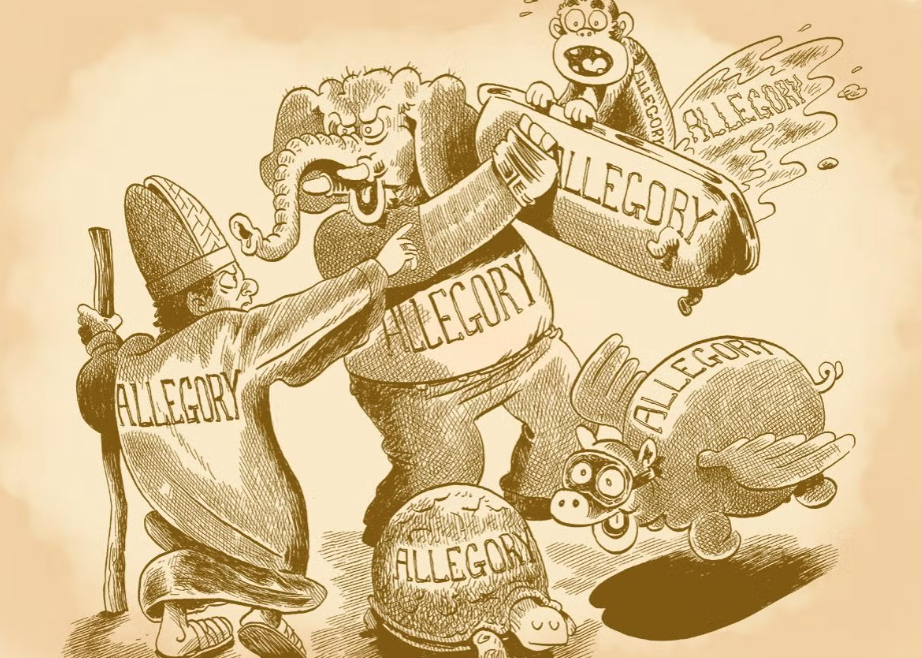
When introducing students to allegory, I like to begin by broadening their sense of what the term means. Too often, students imagine allegory as something obvious and fixed, like Animal Farm representing the Russian Revolution. While that’s a useful starting point, it risks narrowing their thinking. Instead, I encourage them to see that every text, to some extent, operates allegorically because it never functions purely on the literal level. Literature always reaches beyond itself—characters, settings, and actions inevitably gesture toward larger ideas, values, or tensions within the human experience.
This approach helps students understand that allegory is not only about identifying symbols but also about recognising patterns of meaning. For example, a father–son conversation in a memoir can be read literally as dialogue, but it can also be seen allegorically as a representation of how memory and trauma are transmitted across generations. In this sense, allegory is a way of accessing deeper truths through figurative storytelling.
Teaching this perspective is vital for essay writing. Students often struggle when they think analysis means just describing what happens. By framing texts as allegorical, we shift them towards interpretation. They learn to ask: What does this event stand for? What larger idea is being suggested? This allows them to build more sophisticated arguments, because they are no longer confined to surface-level description but are instead engaging with the text’s broader implications.
Ultimately, viewing literature through the lens of allegory empowers students. It shows them that texts are not closed objects but open systems of meaning. Every analysis then becomes an act of uncovering how narrative details embody wider truths, enabling students to craft arguments that are both analytical and original.
Thea Macarthur-Lassen

